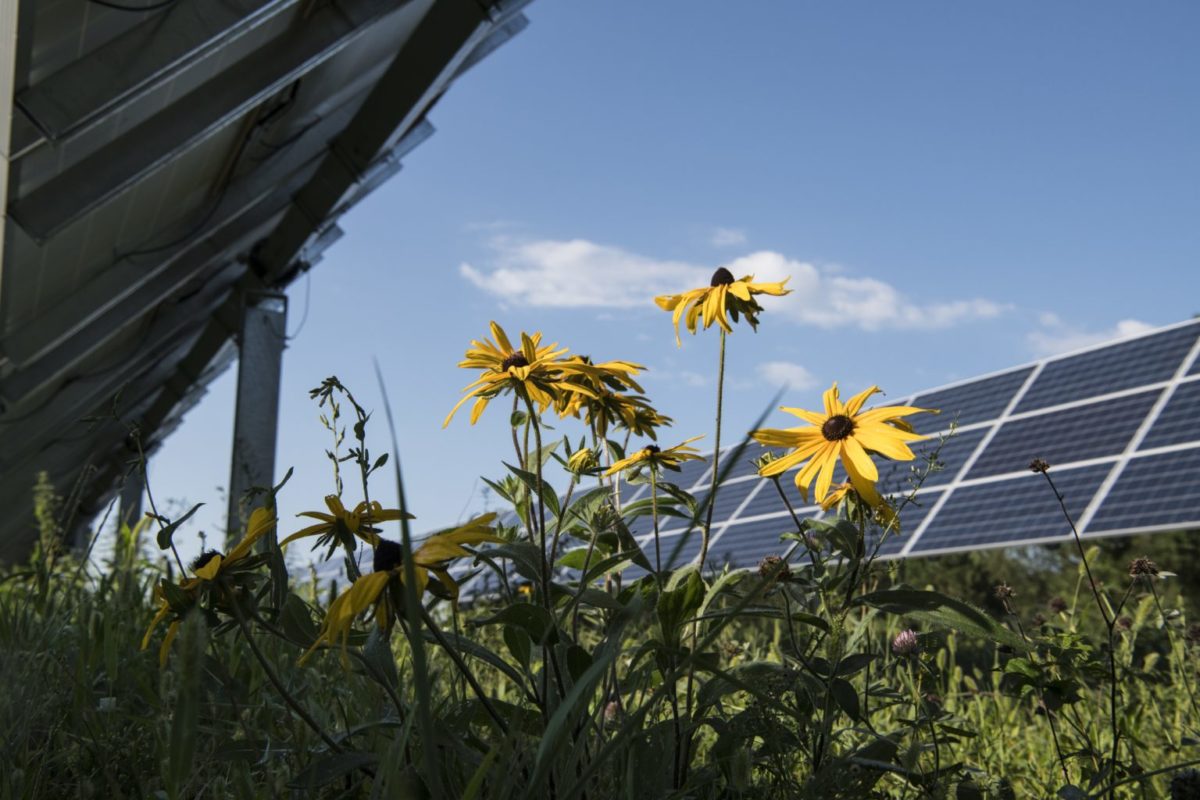From pv magazine Global
An international research team has developed a new approach to improve land use at ground-mounted solar plants, which they claim could be used to add important wildlife habitats or even agricultural activity to land already in use by a conventional PV system.
“We initially developed our approach for existing solar plants installed in the region of Apulia in southern Italy, but it could be utilised in other regions or countries with different vegetation,” Teodoro Semeraro, an environmental scientist at Italy’s University of Salento who led the research, told pv magazine.”It could also be used for new projects that include agricultural use or rooftop installations combining green roofs with solar power generation, where the agricultural aspect would have less importance.”
The approach would see new vegetated land cover cultivated below and around solar installations, as potential habitat for pollinating insects or for agricultural activities including beekeeping and medicinal herb production. This approach would provide a series of additional advantages such as reduction of maintenance costs of green areas in solar parks, fire risk reduction, potential development of small-scale agricultural activities, and positive media coverage, among others.
Local conditions
The scientists pointed out that the selected vegetation to be grown at the solar parks should be able to adapt to the ground’s environmental conditions, water scarcity, and nutritional deficiency. “Our approach may also consider non-indigenous species, but from the point of view of the landscape and the protection of local biodiversity, the use of indigenous vegetation is desirable,” Semeraro stated. “Moreover, the local species are adapted to the climate and the lack of water, which is chronic in Apulia, so they could respond better. But, having said that, the use of non-native species is technically feasible at conditions that respond to specific project needs.”
According to the research, Beekeeping at these sites would not require invasive structures and hives could be laid on the ground during the blooming time. “The biodiversity and ecosystem services could persist over time even after ground-mounted PV systems are dismantled and continuing to support population welfare at both local and larger scale, guaranteeing sustainability,” they further explained, noting that beekeeping may help overcome the issue of monoculture, which is typical of the Apulia region.
Holistic approach
The research listed a range of ecosystem services which solar parks could provide without additional human input, on the basis of the intrinsic value of the vegetation in sustaining ecosystem services. This would turn the solar parks into semi-natural areas, or Agro-Ecological Photovoltaic Gardens, which would host melliferous species blooming in different periods to be harvested and marketed as medicinal herbs. Furthermore, the solar panels may reduce the water stress for the vegetation, while improving soil quality thanks to their shading function.
When asked about what exactly defines agrivoltaics and make it differ from conventional ground-mounted solar facilities, Semeraro said that the crucial element is the presence of an agricultural enterprise in a project. “We cannot speak of agrivoltaics if a stakeholder in the agricultural field is not involved in the project or if there is no farm interested in the cultivation or use of the soil,” he stated. “There is a risk that a plant will be created without there being someone who cultivates it.”
The scientists introduced their approach in the study “An innovative approach to combine solar photovoltaic gardens with agricultural production and ecosystem services,” published in Ecosystem Services.
The group includes scientists from the University of Salento and the Institute of Science of Food Production C.N.R. Unit of Lecce, in Italy, as well as from the Glasgow Caledonian University in the United Kingdom.
“A transdisciplinary approach is important to share knowledge across the different stakeholders and bridge the information gaps typical of a sectoral perspective, creating a holistic vision of the involved professional skills and experiences,” the paper reads. “Its proper implementation requires the joint effort of all economic stakeholders together with technical and scientific experts to promote multifunctional land-use in ground-mounted solar farms.”
This content is protected by copyright and may not be reused. If you want to cooperate with us and would like to reuse some of our content, please contact: editors@pv-magazine.com.









By submitting this form you agree to pv magazine using your data for the purposes of publishing your comment.
Your personal data will only be disclosed or otherwise transmitted to third parties for the purposes of spam filtering or if this is necessary for technical maintenance of the website. Any other transfer to third parties will not take place unless this is justified on the basis of applicable data protection regulations or if pv magazine is legally obliged to do so.
You may revoke this consent at any time with effect for the future, in which case your personal data will be deleted immediately. Otherwise, your data will be deleted if pv magazine has processed your request or the purpose of data storage is fulfilled.
Further information on data privacy can be found in our Data Protection Policy.